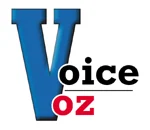
Jake Spitzack
Staff Writer
Just over 25 years ago, Ramsey County began studying transit improvements for the 12-mile-long Riverview Corridor connecting Union Depot in Lowertown with the Minneapolis-St. Paul International Airport and Mall of America (MOA) in Bloomington. That project, now dubbed the Riverview Corridor Modern Streetcar Project, ran on fumes for more than a decade until 2017 when the County completed a study finding that the public preferred creating a streetcar system over light rail and bus rapid transit. The project now has three design options – two for a streetcar route, and one for a bus rapid transit route – and the County will seek community feedback on them beginning in February or March.
Modern streetcars can hold more people than buses but are smaller than light rail trains. They are fully electric and can use preexisting light rail tracks or share lanes with regular street traffic if rails are installed within the roadway.
• Option #1 calls for a streetcar route connecting 20 stations, some of which are existing light rail stations. The streetcars would share exclusive center lanes with the Blue Line light rail from the MOA station to St. Paul’s Grand Avenue station, then share lanes with street traffic along Kellogg Boulevard to Union Depot.
• Option #2 envisions a streetcar route connecting 22 stations, including new stations at Jefferson and Smith Avenues. It would use exclusive center lanes from MOA to the Otto Avenue station near Victoria Street in St. Paul then share lanes with cars on either side of Kellogg Boulevard to Union Depot. Streetcars offer level boarding, and some of the new stations would feature amenities such as heaters, signage showing real-time departure times and payment kiosks. Options #1 and #2 call for a station to be built at RiverCentre near the Xcel Energy Center and potentially one at the future RiversEdge development along Kellogg Boulevard.
• Option #3 is to improve the existing Route 54 bus rapid transit route. Buses would stop at 16 stations between the MOA and Union Depot, sharing lanes with regular traffic the entire way. This route wouldn’t stop at Fort Snelling or Terminal 2 at the airport but could access nine downtown platforms and connect with the Gold Line bus rapid transit route running from Woodbury to St. Paul, which debuts in 2025.
While the bus option would be far less expensive and could get rolling relatively soon, the 2017 study found that the public preferred a streetcar system over the bus alternative. It’s estimated that the streetcar options wouldn’t open for service until 2032 at the earliest and would cost about $2.06 billion, half of which could be funded by the County’s half-cent sales tax and the other half through federal dollars. Part of the cost includes major work needed to make the MN 5 river bridge a two-story bridge, with pedestrians and bikers on the upper level and automobiles and the train below.
The goal of the project is to support the transportation needs of the Twin Cities’ growing population, estimated to increase from 3.16 million to 3.55 million by 2040, and spark economic development by connecting different neighborhoods, business centers and parks. Plans originally prioritized quick travel times but in recent years – especially following the work-from-home movement spurred by the COVID-19 pandemic – project planners have been working to strike a balance between travel times and neighborhood aesthetics. For example, planners are wrestling with whether it’s worth it to sacrifice parking and green space along West Seventh for quick access around town, and if it’s better to have streetcars stop for traffic or be able to zip uninterrupted from station to station.
Ramsey County has four committees working on the project: policy advisory, community advisory, technical, and station area planning. The County is working with St. Paul-based engineering and planning firm Kimley-Horn to complete design work. It’s also working with tribal partners to plan transit options around Fort Snelling/Bdote. Other partners include Hennepin County, Metro Transit and MNDOT. The Policy Advisory Committee will present the three design options in February or March for community feedback and expects to choose one this fall. Preliminary designs and other studies will be completed by the end of 2025 and a final plan will be created by the end of 2028. To provide feedback or for more information, visit riverviewcorridor.com.
<<< HOME








